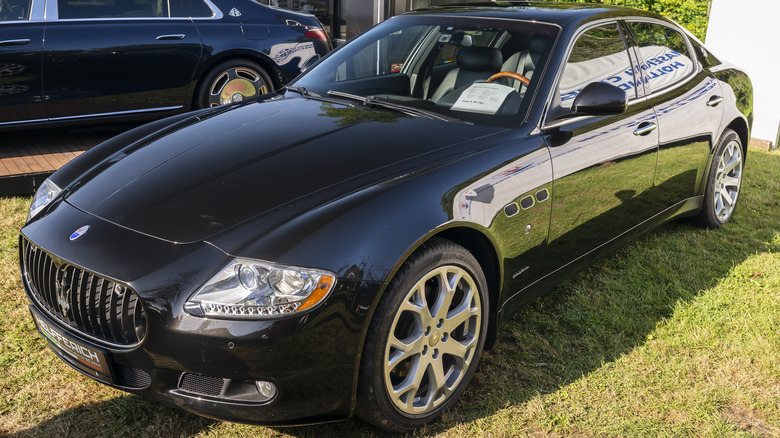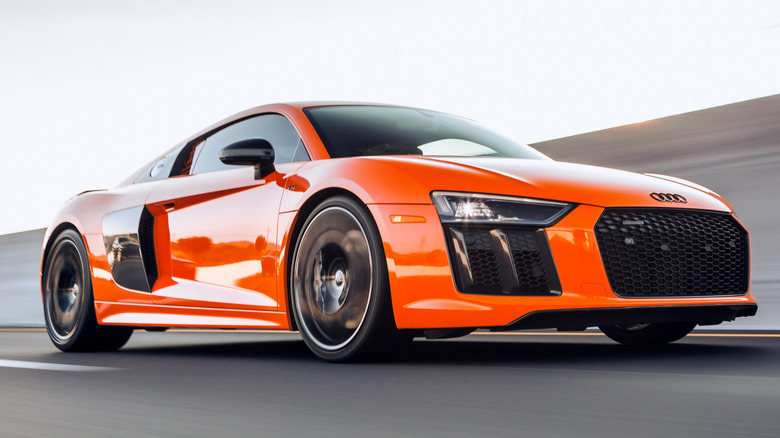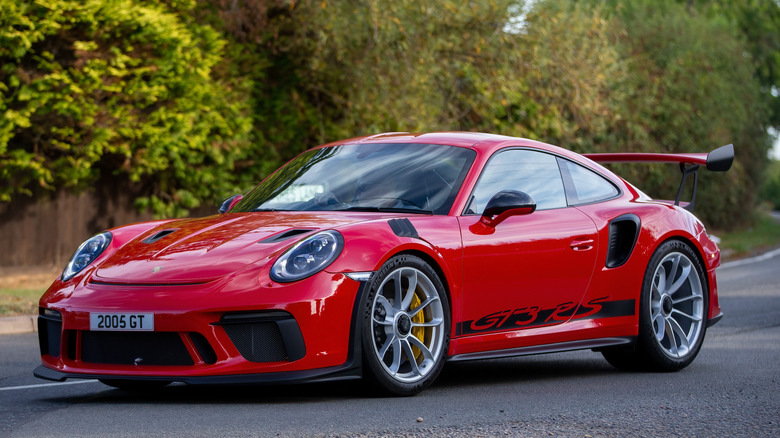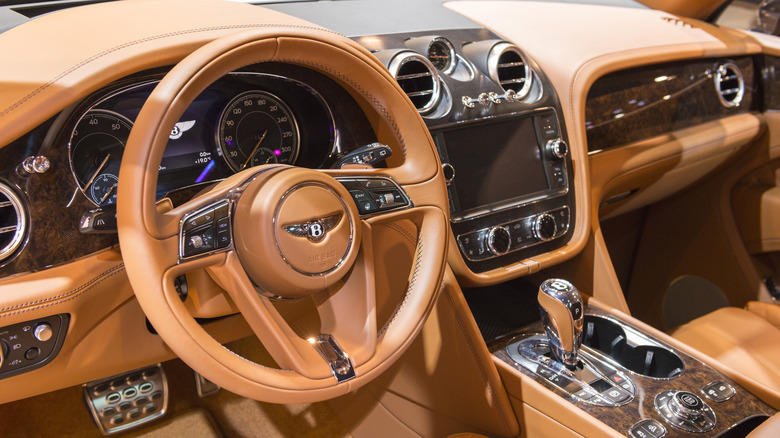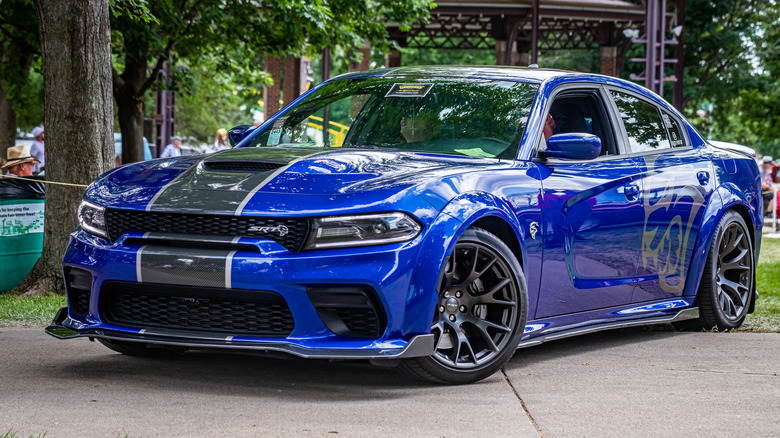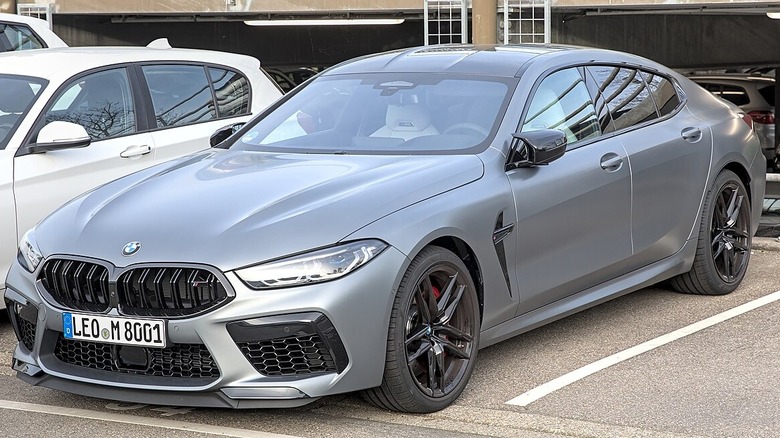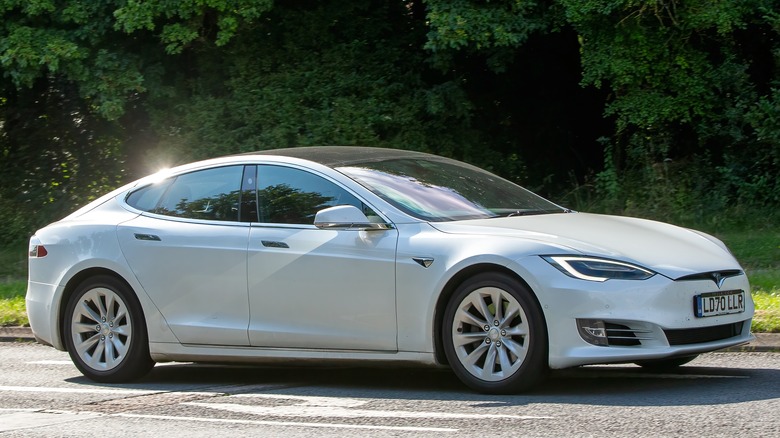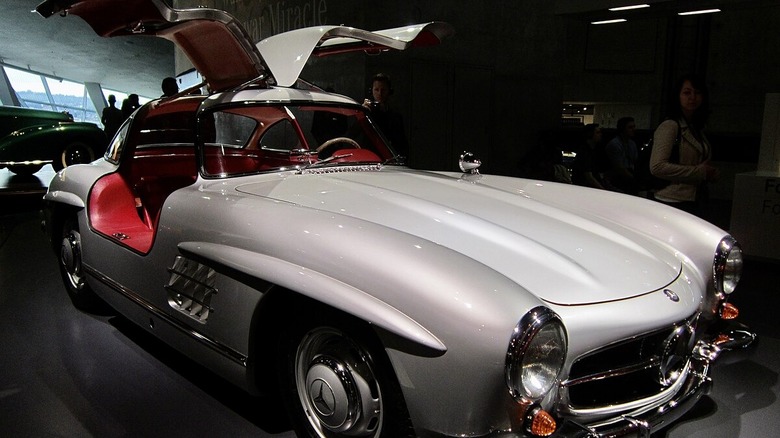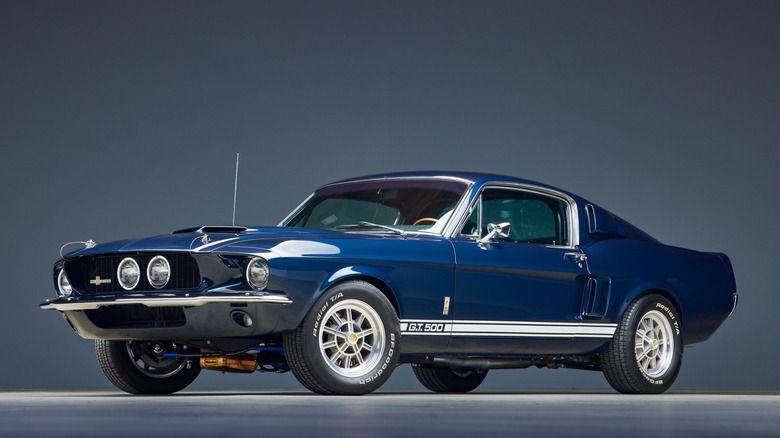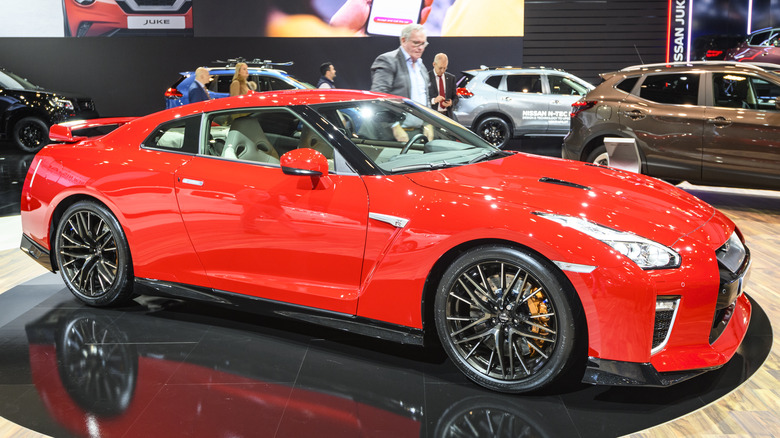These 10 Used Cars Will Have You Paying Outrageous Insurance Prices
Sticker shock on new vehicles is real in a world where a 2024 Ford Ranger Raptor gets a $60,000 suggested price. The workmanlike third-generation Ranger on our list of used pickups that would make a great first truck would be ashamed.
That 2024 Ranger is far from alone. The cost of new vehicles has skyrocketed in recent years, as cars with names like Grand Wagoneer L and F-150, once staples of rugged affordability, see prices soar. That's to say nothing of exotics or modern American muscle cars.
Turning to a used car is a smart, affordable choice for many drivers. But getting it off the lot is just the first part. Regular, mistake-free maintenance is vital to keeping a car reliable, and that costs money. Yet the most significant cost of owning a car is not upkeep; it's insurance. The calculation of every car purchase should include quotes from multiple insurance providers factored into the monthly budget from the moment you find a desirable car in the proper price range.
The cost of insurance varies wildly and depends on many factors, with your driving record and age the two most prominent. However, insurance rates can also depend on marital status, location, credit history, and more. Premium performance or luxury vehicles, especially, demand premium insurance rates. Using government data and insurance company reports, here are 10 used cars that will have you paying outrageous insurance prices.
Maserati Quattroporte: $5,024 to $5,176
Our first stop on the list is with the mavericks at Maserati. Multiple Maserati models hover near the top of the used-car insurance market. The Maserati Ghibil Trofeo, new in 2020, is ostensibly a member of this exclusive club, but with only four years of production, it barely qualifies as a used vehicle. Besides, there's something even more expensive in the Maserati lineup: the Quattroporte.
Dripping with a half-century of Italian design pedigree, Maserati has been crafting the Quattroporte since 1963, creating a deep used market for the luxury performance sedan. The Quattroporte VI, debuting in 2013, is a prime culprit for expensive insurance.
We can see why. The roster of features and functions on the Quattroporte reads like a luxury supercar wish list. There are many engine options, the most furious being a 530-horsepower V8 3.8L Ferrari engine. Those specs will set off alarms at your insurance provider's headquarters. Never mind if you're a young driver or have a checkered history.
Average insurance rates for the Quattroporte vacillate between $5,024 and $5,176 annually. That's over $400 monthly on top of the cost of the car. If a flashy, elegant, finicky car with oodles of high-strung power that makes a mechanic rub his hands in gleeful anticipation when you roll up for an oil change is on your menu, the Quattroporte might fit the bill. Just don't forget that insurance!
Audi R8: $4,160 to $4,568
Audi wanted a seat at the European supercar table with Porsche, Ferrari, and McLaren. When a 1998 engine production deal with Lamborghini blossomed into a buyout, Audi's parent group, Volkswagen, absorbed Lamborghini for $110 million. (Chrysler had done something similar in 1994, stripping the Italian automaker of V10 tech and design for the fan-favorite Dodge Viper before selling it to Megatech for $40 million.)
From the dust of the shakeup, Audi unveiled what its Lamborghini purchase had wrought at the 2006 Paris Motor Show. Under the hood: a 4.2-liter V8 making 420 hp at 7,800 rpm and 317 pound-feet of torque between 4,500 and 6,500 rpm. Styling that Bugatti would look twice at.
The first two generations sold 30,000 units. Audi poured money into development. The 2018 Audi R8 Coupe debuted with a fire-breathing 5.2L fuel-stratified injection V10 with seven-speed automatic S-Tronic transmission, making an impressive 633 hp. All that translates to a fuel-injected heir to the Lamborghini V10 fortune pushing serious power in a complex package. The R8 is expensive both to purchase and maintain. But that shouldn't be headline news: it is a genuine supercar, a multiverse Lambo.
Annual average insurance rates for the R8 range from $4,150 to $4,568. However, it's important to note that these premiums can escalate rapidly with a decrease in age and an increase in speeding tickets. The R8 is not a daily driver. It demands and deserves proper maintenance and a snug, dry home.
Porsche 911: $4,615 to $4,758
Audi wanted to compete with Porsche, and it succeeded. Owners of both brands can be sure to pay a premium for insurance. In production for over 60 years, Porsche's flagship 911 has evolved into a luxury performance juggernaut.
The Porsche company made hay through the post-World War II industrial boom with a series of air-cooled flat-plane engines that made balanced power and enjoyed a low center of gravity. The legendary, timeless, classic, virtually priceless Porsche 356 that started it all used a flat-four, air-cooled 1.1L Volkswagen engine. Founder Ferdinand Porsche had started his career at Volkswagen.
But those days are long over. The modern Porsche 911 sports a 3.0L liquid-cooled flat-plane six-cylinder engine making as much as 385 hp in a 3,400-pound package. While 911s are coveted, they're not uncommon. The nameplate occupies a vast space in the market, with used 1993 to 2019 911s selling for anywhere between $37,500 and $1.5 million, depending on spec and age.
As you might expect, that range inspires some mushiness in the insurance market. But the upshot is that the 911 is one of the top 10 most expensive used cars to insure. A Porsche 911 Turbo scores at $4,615 annually, while a 911 Carrera GT3 RS demands $4,758.
Bentley Bentayga: $5,941 to $36,098
We find the Bentley Bentayga swimming in the exclusive sea of ultra-luxury performance SUVs. The first SUV from an established luxury brand, the Bentayga benefited from Bentley's parent company, Volkswagen Group, which owned Audi and Porsche at the time. Bentley sourced from the Audi Q7 and Porsche Cayenne supply line.
Bentley made the most of it. The Bentayga arrived at the 2015 Frankfurt Motor Show with a 4.0L V8 with 550 hp and a top speed of 180 mph. It was a distinctive but unmistakable Bentley. Luxurious to the nth degree, it embedded as choice for the 1%-er with the cash to shell out $200,000 for a brand new grocery getter. Performance only climbed from there. By 2022, the Bentayga S had a 6.0-L W12. New models had a suggested price of $219,800, plus a $2,725 destination charge. Used Bentaygas currently fetch an average of $104,000.
Insurance rates reflect the exclusivity, performance, and luxury of the Bentayga. An inexperienced driver of 18 with poor credit can expect to pay as much as $36,098 annually — a startling $3,000 a month. Conversely, a 55-year-old with good credit and a good driving record can expect to pay as little as $5,941 annually, or just under $500 monthly.
The Bentayga is undoubtedly an upper-echelon premium vehicle. Guarding powerful, high-dollar luxury brands against accident or theft is expensive for insurance companies. If you're spending $100,000 minimum on a luxury performance SUV, you're paying for the insurance that goes with it.
Dodge SRT Hellcat Redeye: $1,843 to $2,927
While luxury European performance cars hold a significant place in the power club, it's worth noting that Dodge's SRT division became a performance icon in the Great Muscle Car Revival of the mid-2000s. Modern V8s produced substantial power while meeting emissions standards, ushering in a glorious second age for Mopar's once-great muscle nameplates.
The peak of the madness broke between 2015 and 2019, when SRT models had, for the proper price, a 6.4L supercharged V8 making enormous power to the tune of 717 horses. No one needs all that power in a production street vehicle. That's "It got away from me real quick — I'd better call my insurance, Officer ..." type of power. Insurance companies don't like fielding calls from the power company that owned the pole you knocked over.
Teenagers need not apply, but the Hellcat won't approach Bentley's insurance rates. At a quarter of the price, the Hellcats are a domestic Dodge aimed at Dodge performance fans.
The average range from seven prominent insurance providers spans $1,843 to $2,927 annually. That's low compared to European luxury exotics, but paired with an insatiable appetite at the gas pump, it might be a little much for the average Joe.
BMW M8 Competition Grand Coupe: $4,231 annually
BMW was bound to make this list, and that's no criticism. High insurance rates correlate with high-end performance luxury, and BMW is one of those that does it best. The Car and Driver list of most expensive models to insure includes BMW no fewer than four times. Each offering has an M in the model number, denoting BMW's powerful M-series line of performance and handling packages, followed by the numbers denoting the company's premier luxury performance 7 and 8 series.
The M8 coupe, a symbol of exclusivity and power, has been available since 2019, with some early models now gracing the used market. Most upper-tier brands have a premier grand tourer, the ultimate expression of speed and comfort wrapped into a package meant to be the cutting edge of BMW's capability.
It's no coincidence that this list is rife with turbo and supercharging. BMW's 4.4L V8 is duly twin-turbocharged to the tune of 325 hp and 553 lb-ft of torque. It sprints from zero to 62 mph in 3.3 seconds and claims a top speed of 217 mph.
All that premium performance comes at a price. Car and Driver estimates that the average BMW M8 Competition Grand Coupe driver is on the hook for an average of $4,231 annually.
Tesla Model S: $3,624 annually
Polarizing and successful, the Tesla Model S is an upper-tier all-battery-powered statement. A used Model S averages a $43,747 price tag over its 11 years of production. However, with a top sale of $137,000, it's clear that certain well-maintained and unique specimens can command solid six-figure pricing.
With up to 762 hp, the acceleration of instant, accessible torque, a modern interior that reads like a view of the near future, and elegant styling, the Model S has achieved a timelessness that looks like the near future over a decade after its debut. It's a fast, stylish, and high-tech car, packed with state-of-the-art systems, screens, and materials — which makes it a prime target for theft. However, it also holds a unique position in the upper end of the electric vehicle market, appealing to both environmentally conscious and politically right-wing consumers. This knowledge will make you feel informed and knowledgeable, despite its average monthly insurance cost of $302, or $3,624 annually.
Mercedes-Benz 300 SLR Uhlenhaut Coupe: $100,000 annually
A rare perfect confluence of artistic merit, automotive history, and evolutionary significance, the Mercedes made the world's most expensive car in the 300 SLR Uhlenhaut Coupe. It was the personal vehicle of Rudolf Uhlenhaut, designer and head of passenger car development at Mercedes-Benz.
The 300 Super Leicht Rennsport (SLR) was an art piece in all respects but one: it was also a racetrack terror. Its 2982-cubic-centimeter eight-cylinder made an unheard-of 310 hp in 1955. Mercedes built two prototype SLRs, Red and Blue, named for their interior color schemes. They were insanely fast, achieving 186 mph speeds when the competition barely reached 125 mph. Mercedes only ever built nine total 300 SLRs, Red and Blue included, and only two were coupes.
Uhlenhaut received the Red prototype as a personal vehicle. He drove the later-to-be-pricless coupe on his commute, making the 136-mile trip from Stuttgart to Munich — normally a 2½-hour drive – in just over an hour.
In 2022, a private buyer made the Uhlenhaut Coupe the most expensive car ever sold with a $143 million bid at auction. The sale benefited a scholarship fund for young people interested in the environment.
Insurance for a car like that extends well beyond liability and theft coverage. Rates for ultra-valuable cars can depend as much on storage and security as on driver records. It's not a car. It's a Picasso, a Van Gogh. Keeping insurance on cars over $100 million in value can best be $100,000 annually.
1967 Ford Mustang Shelby GT500 Super Snake: esimated $30,000
The Unhlenhaut Coupe is an outlier. A huge market exists between a mid-tier European supercar and the most valuable car in history, breaking seven and eight figures with ease. Insuring historic or classic cars can be expensive. What's it like to own and insure one?
The one-of-one GT500 Super Snake built by automotive icon Carroll Shelby achieved a place in American history in an era of space exploration. Car and Driver drooled over it on its debut in 1967 – 7 liters in a Mustang was unbelievable. And there would be a single specimen with Shelby's personal touch.
The Super Snake last sold for $2.2 million at a 2019 Mecum auction, not much compared to the 300 SLR Coupe, but a major investment all the same. And spending like that isn't uncommon in the classic market. Wealthy people with an interest in these cars support some big-ticket sales.
Cars like this one occupy an interesting space in the culture. They may be covered under a special classic insurance policy. Classic insurance covers damages associated with limited driving and transportation. It assumes low yearly mileage and requires the vehicle to be more than 25 years old and have a heritage that qualifies as classic.
The range of policy rates is surprisingly wide, accommodating everything from the guy with his first Camaro in his garage to the deep-pocketed Mecum maniac. Classic insurance can range from a few hundred to tens of thousands per year.
2011 to 2022 Nissan GT-R: estimated $4,000
The logical conclusion of a national heritage of small-displacement efficiency, forced-induction Japanese street cars set North America afire in a blaze of underbody neons in the early 2000s. Candy-colored Japanese domestic market cars shrieked across the screens of cinemas everywhere, announcing the arrival of a Japanese invasion.
In the vanguard, the legendary Nissan GT-R was born of the company's Skyline GT-R of the olden days. The current most menacing used model is the post-facelift R35 edition, built from 2011 to 2016, or 2016 to 2022. Extraordinary power – 530 and 565 hp, respectively — makes these cars insurance pariahs.
Both models use a dual-turbo 3.8-liter V6. It is the Japanese market's equivalent of a V10 Lambo or a 4-liter Ferrari engine.
Modern used GT-Rs have an average market value of $95,474. The lowest sale is $36,516, and the record sale is $346,000. GT-Rs are known favorites of young drivers who fancy themselves both fast and furious. Good coverage on one of these cars won't come cheap, but while they're popular and semi-rare, one should expect to pay thousands annually.

